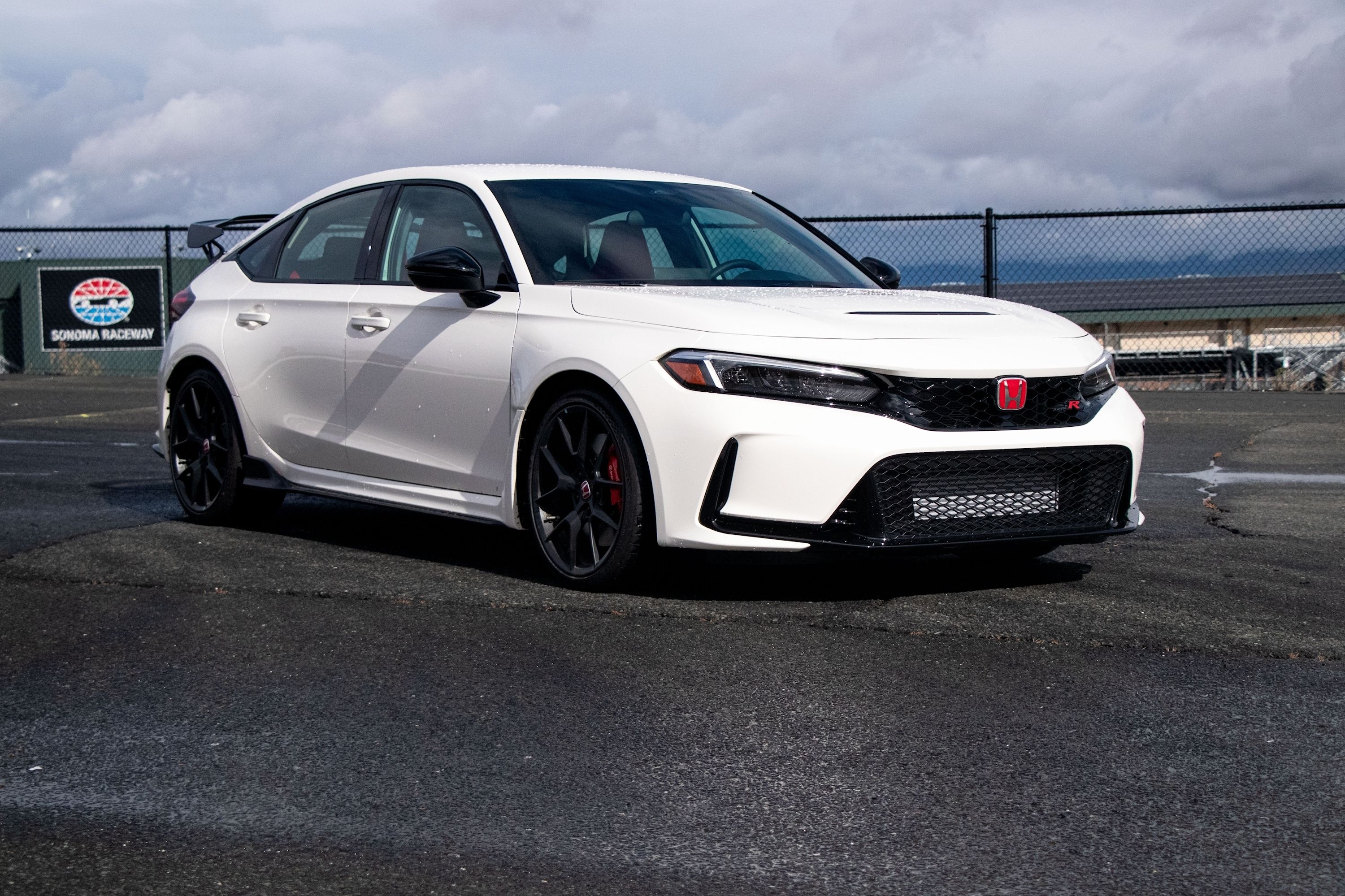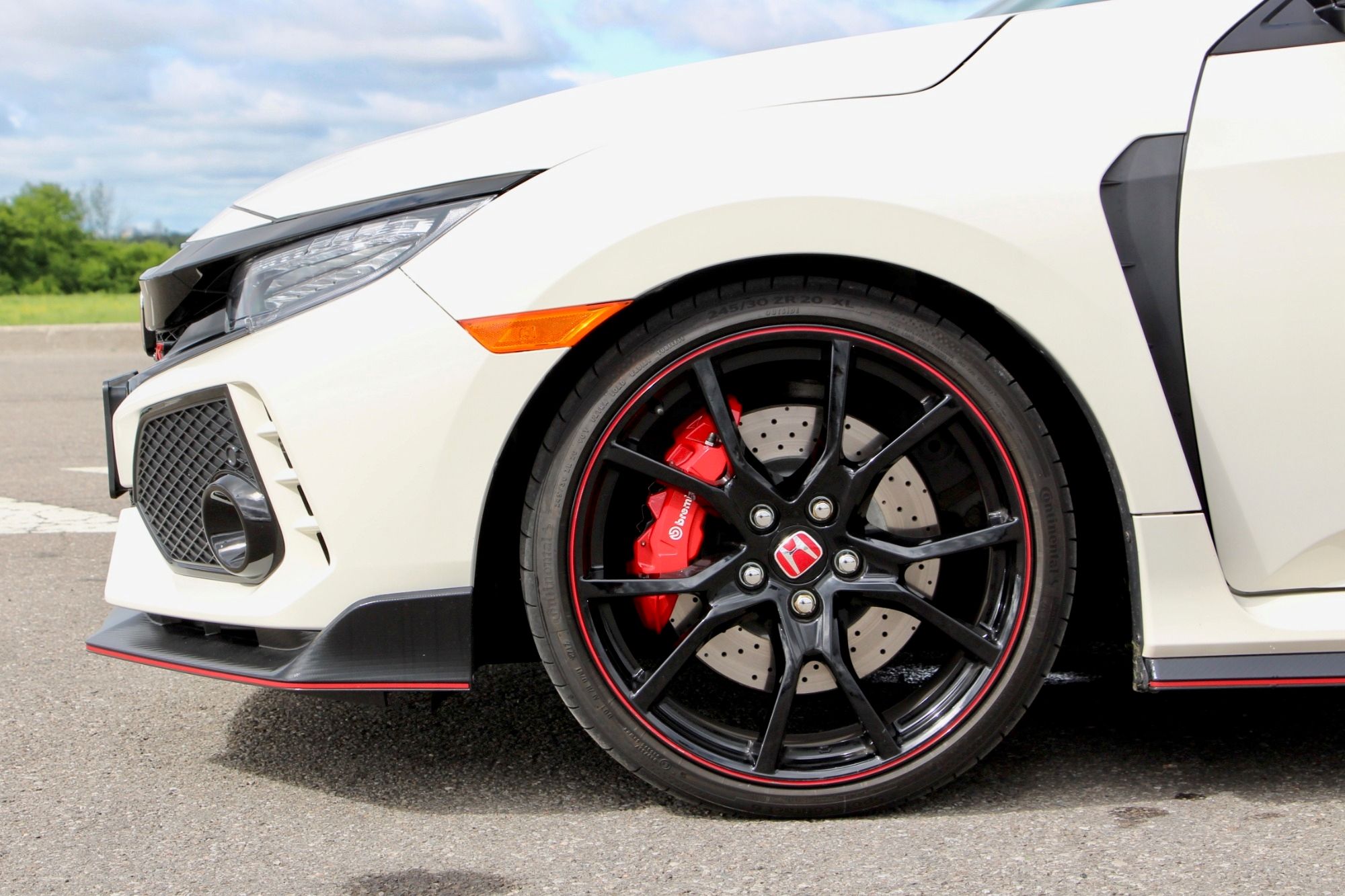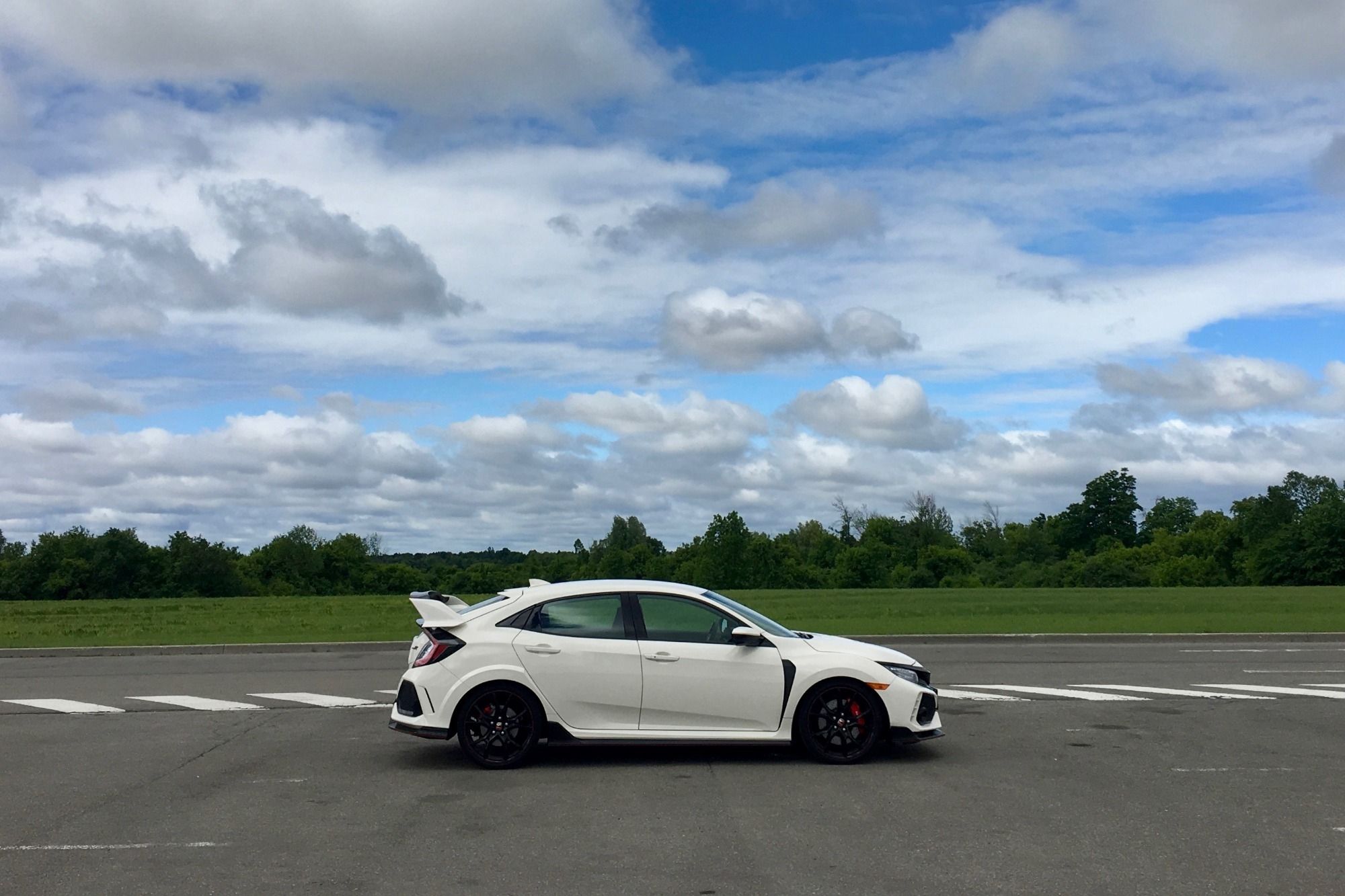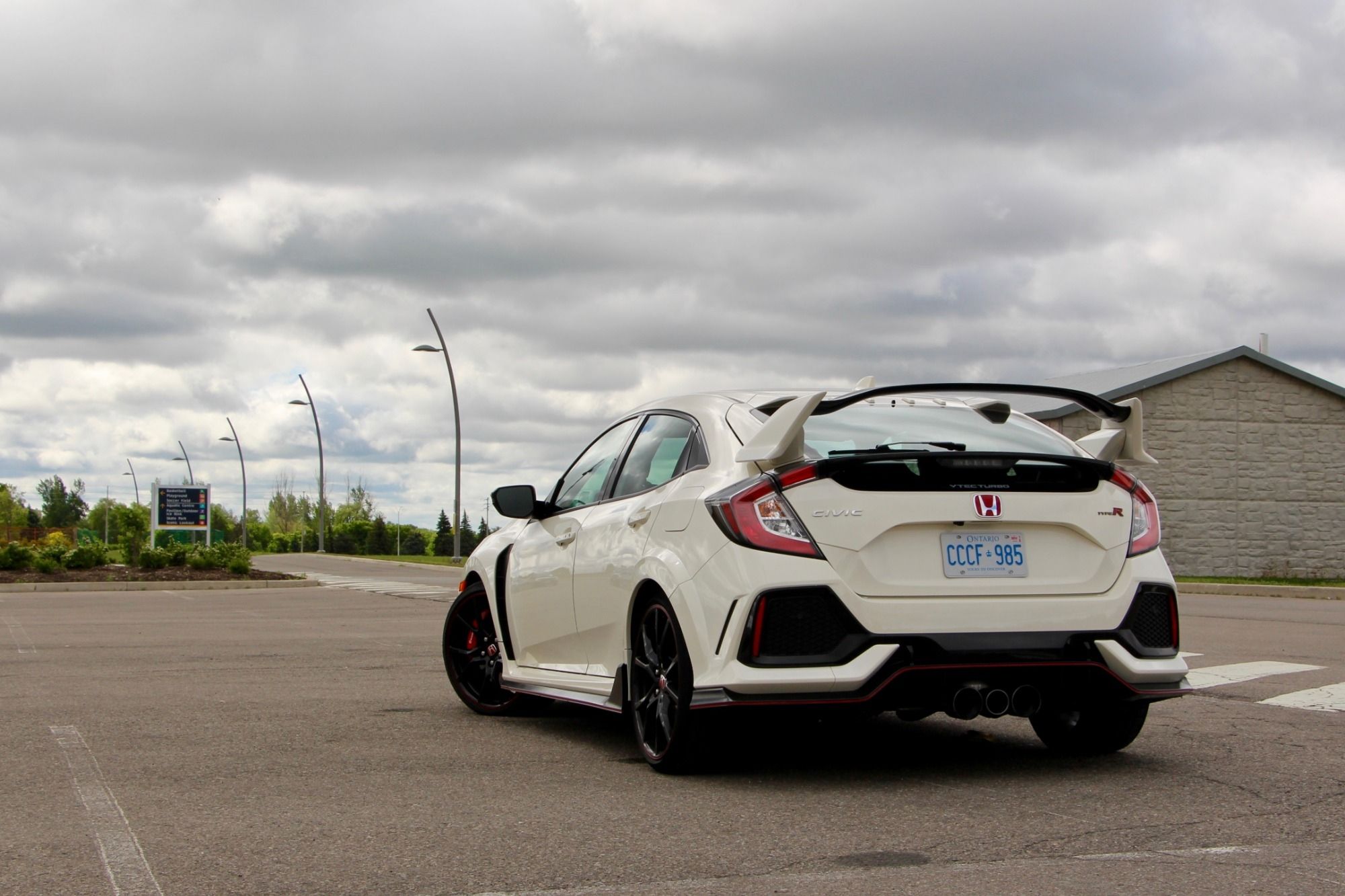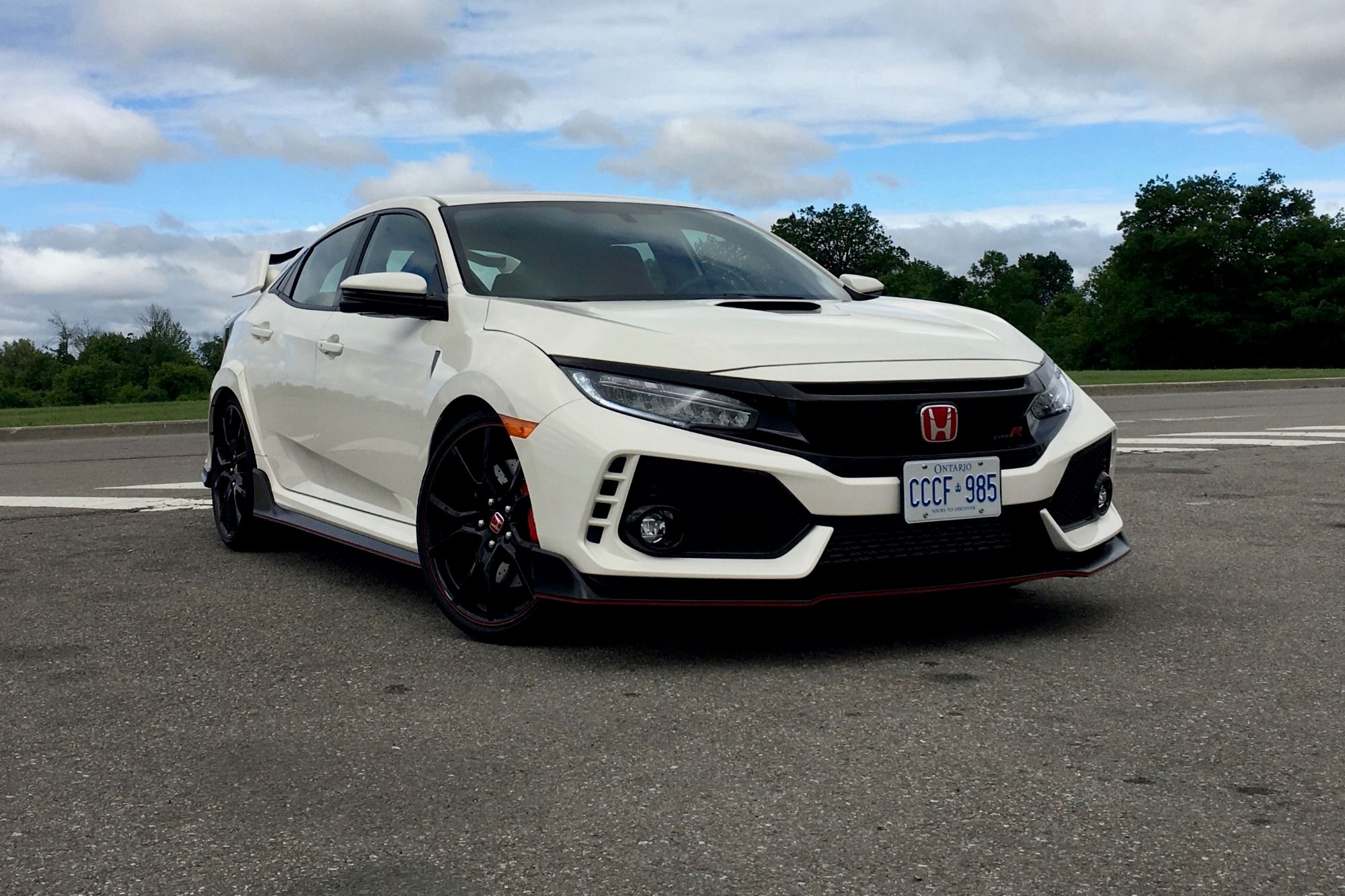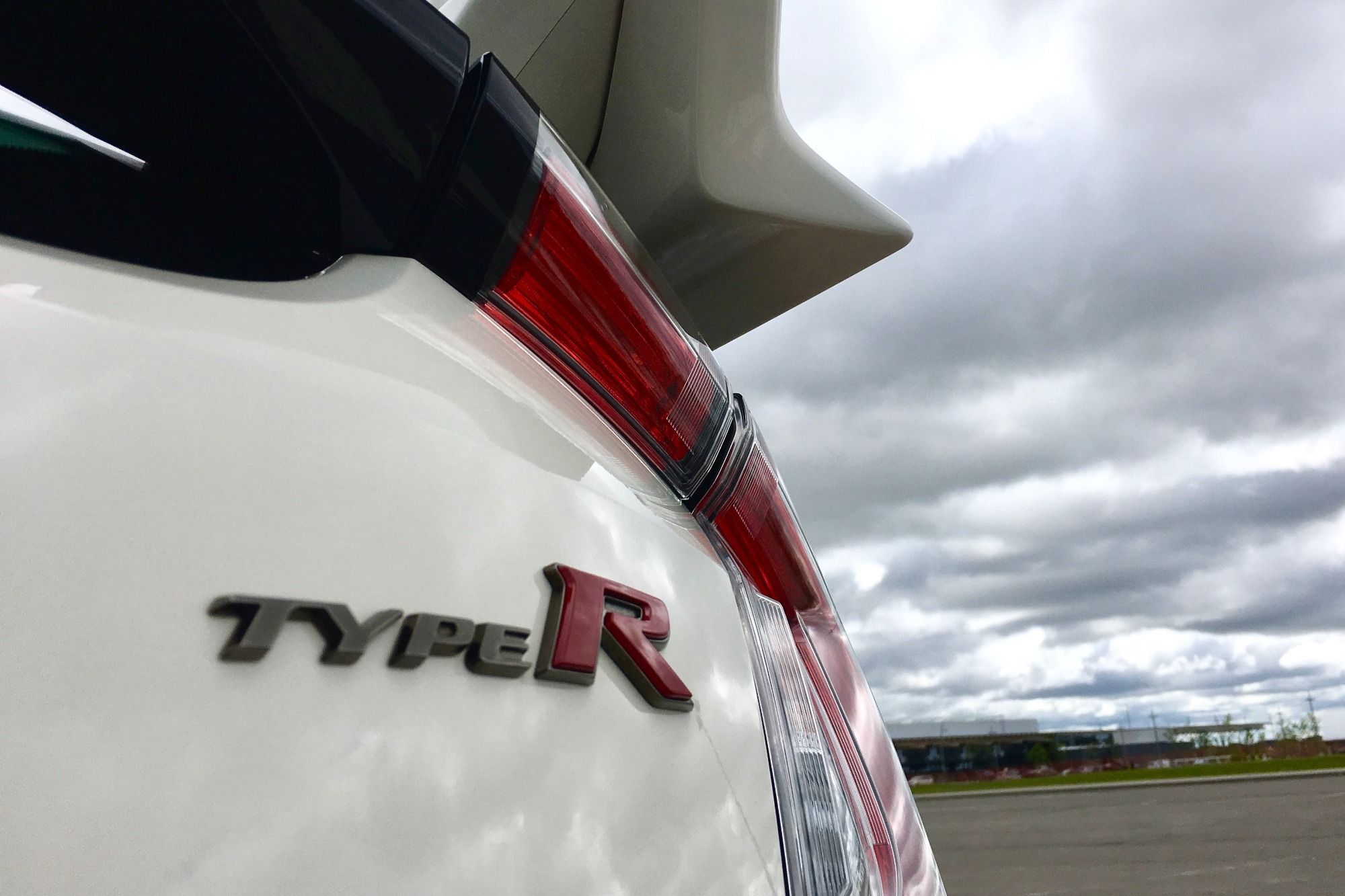2018 Honda Civic Type R Test Drive Review: Locked and Loaded
Every once in a while, a car comes along that completely rewrites your perceptions. For generation after generation of front-wheel-drive hot hatches, I've enjoyed them for what they are and appreciated the combination of sportiness, practicality and everyday drivability. But in the back of my mind, there was always the reservation that I really wouldn't want one for my track car. From the VW GTI and Ford Focus ST to the Mazdaspeed3 and Mini Cooper JCW, I loved them all, but whenever I was in one on a track or autocross course, it just never felt right.
Between understeer and torque steer, I just didn't feel dialled in as I have in rear-drive or all-wheel drive cars from Miatas and STIs to BMWs and Porsches. Until I drove the Civic Type R on a track. Now, I'm not an engineer nor am I very mechanically inclined, so some of the mysteries of Honda's solutions will forever remain in the realm of magic to me, but they work. But before we get to its behavior, let's back up a bit and take a wider view of this car. The Civic Type R finally arrived in North America last year after 20 years and several generations in other markets. It is available only as a hatchback, only in front-wheel drive, and only with a manual transmission connected to its 2.0-liter turbo engine.
It also offers almost no options except for the five colors at an entirely reasonable price of $35,595 ($34,700 MSRP + $895 Destination). However, you can get accessories like a wireless charging tray, floor mats, some extra trim bits, and a cargo net that you absolutely need to buy or your groceries will always end up all over the place if you drive it the way it was meant to be driven. The engine is Honda's new 2.0-liter turbo, direct injected and dual-cammed with iVTEC to manage fuel and timing, leading to 306 hp at 6,500 rpm just before its redline at 7,000 rpm and 295 lb-ft of torque from 2,500-4,500 rpm.
The engine is irresistible to spin up with the turbo whistling away faintly and the wastegate occasionally whooshing, the exhaust burbling and spitting, but it doesn't get too irritating when you settle in at a steady cruise on the highway. It also pulls like crazy once you hit that peak torque after 2,500 rpm, and the most limiting factor for acceleration is your own ability with throttle and shifting. For me, the greatest thing about this car is the manual transmission. I'm not in love with the shifter knob itself necessarily, but the shift action and clutch are a beautiful combo to work with. There's plenty of weight to the clutch without getting heavy and cumbersome, the throws are short and gates perfectly spaced, with just a bit of a notch when you slot it into gear.
The ratios are short, which adds to the fun since it requires more shifting to get the most out of the engine, and every gear pulls like crazy in that wide band of torque. It also has a couple neat tricks, with a screen in the gauge cluster that flashes brightly when approaching redline, and automatic rev matching to prime the engine when downshifting. One of the neat things about the rev matching is that it can be turned off when you're in the mood to fly solo and work on your heel-toe downshifting. Honda doesn't publish acceleration numbers themselves, but independent sources have achieved 0-60 mph in under 5 seconds, and it definitely feels like it can get under 6 without abusing the clutch or even trying very hard.
It only weighs 3,117 pounds, so it feels light changing directions and stopping, the Brembo brake setup the largest ever fitted on a Civic. Front rotors are cross-drilled and 13.8 inches with 4-piston aluminum calipers, with functional cooling ducts sucking air away from the rotors to keep them cooler under heavy use. The rears are 12.0 inches and solid rotors with single-piston calipers. Brake feel is excellent, and the 245/30ZR20 Continental Sport Contact 6 tires displayed amazing grip on the road and even on the track. The crowning achievement for the Civic Type R is, of course, the suspension.
While sharing a platform with the ordinary Civic, Honda spared no expense turning this into the fastest front-wheel drive car ever, at least if you go by Nurburgring times. The adaptive damper system might get all the press, but that is just the icing on the cake that buys back a slightly more forgiving ride for everyday comfort. The true hero is a totally different aluminum-intensive dual-axis suspension setup and wider track with 29-mm stabilizer bar at the front and specially tuned multilink rear suspension with 20.5-mm stabilizer bar and 1.2-inch wider track. The hardware works incredibly well in concert with the adaptive damping system that allows you to choose between Comfort, Sport and R modes.
It also automatically tweaks damping responses on the fly, taking into account conditions, steering input, lateral forces and suspension travel. The drive mode system also adjusts steering, throttle, rev-matching, vehicle stability and traction control, plus the "Agile Handling Assist", which is Honda's term for brake-based torque vectoring. As promised by Honda's attention to detail down to every millimeter of camber, caster and offset, the Type R dives into corners, staying flat and balanced throughout. Coming out of corners, it doesn't let up, the damping and engine management software working with the limited slip differential lock in optimum power delivery, and no torque steer fighting to rip the wheel out of your hands.
I only spent a handful of laps teasing out the abilities of the Type R, so I hardly scratched the surface, but I instantly felt comfortable on a tight, technical track that leans heavily on braking, turning and accelerating. The car loads up the front tires under braking without getting skittish, then turns in without hesitation, the variable steering providing quicker responses in corners but still plenty of feel for slight adjustments when holding a line, and it doesn't miss a beat when putting power down exiting the corner. While every car is different, this reaches a plane of enjoyment with the likes of Miatas and Boxsters thanks to the steering, gearbox and handling.
I had refused to believe my colleagues that vouched for it previously, and was completely stunned when I discovered the joy. To top it all off, the Type R doesn't let down after you've left the track either, Comfort mode bringing a level of civility that is on par with the VW Golf R or Mini Cooper S. So it won't punish you even on rough city streets, and has some steering assists that help keep it locked and centered in its lane when cruising on the highway. Even the seats manage a best of both worlds balance, with plenty of bolstering and Alcantara inserts to keep you from slipping around, but breathable fabric and good support to provide comfort in daily driving.
The bolsters are a bit tall making entry a bit of extra effort, but nothing dramatic and it's still easier than any low-slung sports car out there. While the drive is impeccable for someone looking for a sports car to take to the track or just a (very) fun car to tool around in, the infotainment system is still the previous generation compared to the Accord and Odyssey, so it's a bit slow, sometimes frustrating, and lacks a basic volume knob. There is, however, excellent cabin storage under the armrest and below and to the sides of the shifter, not to mention door pockets and glovebox. Even the rear seat has fixed cupholders and a little tray since Honda skipped the fifth seat in most Civics.
The rear seats are very basic, but roomy enough, with a bit of bolstering in case you you drive like that even with a full complement of passengers. The trunk offers generous cargo space, 25.7 cubic feet in the back and up to 46.2 when you drop the 60/40 split rear seat. The Civic Type R legend has been building for 20 years without North Americans getting a taste, but it's finally here, and it lives up to all those expectations. Although it may give up some capability in poor weather compared to its all-wheel-drive competitors, it is just as practical as any compact hatchback and offers excellent value as a fully loaded model.
But best of all, it raises the bar for front-wheel drive, not just for its lap times or top speed, but also for its superbly balanced and intuitive feel on track.

